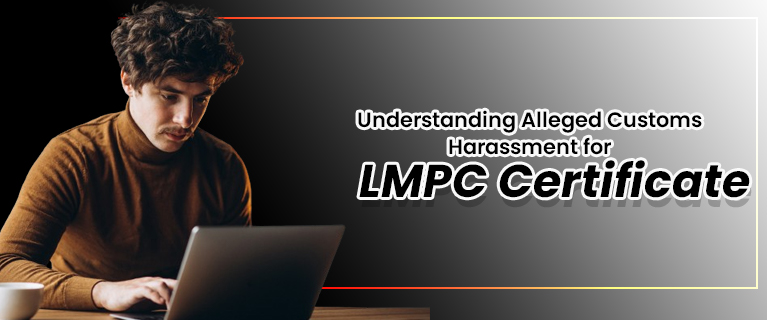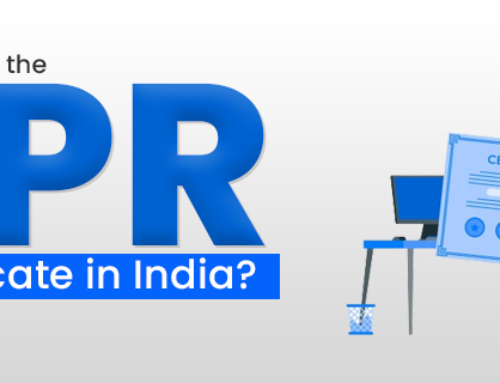In the complex realm of commerce, businesses navigate a labyrinth of regulations, grappling with challenges that can pose substantial impediments to their seamless operations. Among the myriad intricacies, a recurring source of contention arises in the domain of customs clearance, particularly concerning the Legal Metrology Packaged Commodities (LMPC) certificate. This critical facet of international trade has become a focal point for businesses grappling with regulatory intricacies, sparking debates around perceived harassment during the customs clearance process.
The Significance of LMPC Certificate:
Contents
- The Significance of LMPC Certificate:
- Allegations of Customs Harassment:
- 1. Excessive Documentation Requirements:
- 2. Unreasonable Inspections:
- 3. Communication Barriers:
- 4. Inconsistent Enforcement:
- Addressing Alleged Harassment:
- 1. Clear Understanding of Requirements:
- 2. Proactive Compliance:
- Engage in Dialogue:
- 4. Legal Consultation:
- 5. Industry Advocacy:
- Collaboration for Improvement:
- 1. Streamlined Processes:
- 2. Training and Awareness:
- 3. Digital Integration:
- 4. Feedback Mechanism:
- Conclusion:
The LMPC certificate holds a paramount significance in the landscape of trade and commerce. It serves as a legal validation, ensuring that packaged commodities adhere to specified standards and guidelines. These standards encompass various facets, ranging from accurate measurements to mandated labelling requirements. The certificate acts as a safeguard against unfair trade practices, providing consumers with the assurance that the products they purchase meet the prescribed quality and quantity standards.
However, despite its noble intent, the LMPC certificate has become a source of contention for businesses engaged in international trade. Allegations of harassment in the customs clearance process have surfaced, with companies expressing frustration over what they perceive as undue obstacles imposed by customs authorities. The intricate nature of compliance procedures, coupled with the evolving landscape of regulations, has created an environment where businesses feel beleaguered, affecting the efficiency and expediency of the customs clearance process.
Read also this -: Introduction To LMPC Certificate For Imports
To delve into this multifaceted issue, it is crucial to understand the nuances surrounding the LMPC certificate and the challenges businesses face in obtaining and maintaining compliance. The customs clearance process, intended to facilitate the smooth flow of goods across borders, has inadvertently become a source of anxiety for businesses, leading to delays, additional costs, and, in some cases, disruptions to the supply chain.
In the subsequent sections of this blog, we will unravel the layers of complexity associated with the LMPC certificate, examining its role in international trade, the specific challenges encountered by businesses, and the potential ramifications of perceived harassment during customs clearance. Furthermore, we will explore viable measures and strategies to address these concerns, fostering a more harmonious and efficient trade environment for businesses navigating the intricate landscape of global commerce.
Before delving into the alleged harassment, it’s crucial to comprehend the importance of the LMPC certificate. This certification, issued by the Legal Metrology Department, is mandatory for businesses involved in packaging and selling commodities.
Allegations of Customs Harassment:
Businesses often claim to face challenges and undue scrutiny during customs clearance processes, particularly in relation to the LMPC certificate. Some common allegations include:
1. Excessive Documentation Requirements:
Customs authorities may demand a plethora of documents related to the LMPC certificate. This could include detailed product specifications, compliance reports, testing documentation, and other regulatory paperwork. The sheer volume and complexity of these requirements are often cited by businesses as a significant hurdle. The process of collecting, organizing, and submitting these documents is time-consuming and costly, leading to delays in customs clearance. Businesses argue that this excessive paperwork is beyond what is necessary for compliance and contributes to administrative burdens.
2. Unreasonable Inspections:
Businesses allege that customs officials conduct inspections that they perceive as excessive or focused disproportionately on LMPC certificates and packaging compliance. Inspections may involve thorough examinations of the goods, leading to delays and potential damage to sensitive products. The frustration arises when businesses believe these inspections go beyond what is necessary for legitimate regulatory compliance, leading to increased costs and operational disruptions.
3. Communication Barriers:
Businesses claim to face challenges in obtaining clear and timely information from customs authorities regarding LMPC certificate-related requirements. This could manifest as unclear guidelines, lack of responsiveness to inquiries, or insufficient feedback on submitted documentation. The resulting communication gaps create uncertainty for businesses striving to meet compliance standards. Without effective communication channels, businesses may struggle to understand and fulfill the necessary obligations, leading to potential errors, delays, and compliance issues.
4. Inconsistent Enforcement:
Allegations of inconsistent enforcement revolve around variations in interpreting and implementing LMPC certificate regulations across different customs checkpoints. Businesses argue that the lack of uniformity in enforcement practices creates confusion and frustration. What may be deemed compliant at one checkpoint may face challenges at another due to differing interpretations. This lack of consistency makes it difficult for businesses to navigate regulatory requirements confidently, contributing to a sense of unpredictability and hindering smooth cross-border trade.
Addressing Alleged Harassment:
While businesses might perceive customs scrutiny as harassment, it’s essential to address these concerns through constructive measures. Here are potential steps to navigate these challenges:
1. Clear Understanding of Requirements:
Businesses should invest time and resources in comprehensively understanding the requirements associated with the LMPC certificate and relevant customs regulations. This involves a detailed examination of documentation criteria, product specifications, and any other stipulations. A clear understanding ensures that businesses can proactively prepare and submit the necessary information during customs clearance, minimizing the risk of delays and complications.
2. Proactive Compliance:
To mitigate potential issues during customs clearance, businesses should proactively comply with legal metrology standards. This involves keeping all relevant documents, including the LMPC certificate, up-to-date and readily accessible. Regularly reviewing and ensuring adherence to compliance standards helps businesses navigate customs scrutiny more smoothly and reduces the likelihood of facing challenges related to alleged harassment.
Read also this -: Understanding the Different Types of LMPC Certificates
Engage in Dialogue:
Establishing open and constructive communication channels with customs authorities is crucial. Businesses should actively seek clarification on any unclear requirements and express concerns or challenges faced during the clearance process. Proactive engagement fosters a collaborative environment, allowing both parties to work together to address issues and enhance mutual understanding of regulatory expectations.
4. Legal Consultation:
In cases where businesses encounter persistent challenges or believe they are facing undue scrutiny, seeking legal consultation is a viable option. Legal experts specializing in customs and trade regulations can provide guidance on rights, responsibilities, and potential avenues for resolution. This step ensures that businesses are well-informed about the legal aspects of customs clearance and can take appropriate actions to address any alleged harassment.
5. Industry Advocacy:
Collaborating with industry associations or trade groups can amplify the collective voice of businesses facing similar challenges. Through joint efforts, businesses can advocate for improvements in customs clearance processes, highlight systemic issues, and work towards creating a more transparent and efficient regulatory environment. Industry advocacy serves as a powerful tool to address shared concerns and promote positive changes in customs procedures.
Collaboration for Improvement:
Addressing the alleged harassment surrounding LMPC certificate clearance requires a collaborative effort between businesses, regulatory authorities, and industry stakeholders. Some potential areas of improvement include:
1. Streamlined Processes:
Advocating for streamlined and standardized customs clearance processes involves pushing for uniform procedures and regulations across different customs checkpoints. This can help reduce disparities in the interpretation and enforcement of LMPC certificate requirements. Standardization facilitates a more predictable and consistent experience for businesses, reducing the likelihood of perceived harassment and ensuring a smoother flow of goods across borders.
2. Training and Awareness:
Conducting training sessions and awareness programs for customs officials is crucial in ensuring a comprehensive understanding of legal metrology regulations, especially those related to the LMPC certificate. By providing customs authorities with in-depth knowledge about the specifics of these certificates and associated compliance requirements, businesses aim to foster a more informed and accurate assessment during inspections. This can contribute to a reduction in unwarranted scrutiny and facilitate a more efficient clearance process.
3. Digital Integration:
Promoting the integration of digital platforms for document submission and verification is a key step in modernizing customs clearance processes. Digitalization reduces the reliance on traditional paperwork, minimizing the risk of errors and delays. Businesses advocating for digital integration seek to enhance efficiency by implementing secure and standardized systems for submitting and verifying LMPC certificates. This shift towards digital platforms also has the potential to improve transparency and communication between businesses and customs authorities.
Read also this -: How to get a Legal Metrology Certificate for Import Hassle-Free
4. Feedback Mechanism:
Establishing a feedback mechanism allows businesses to provide constructive feedback on their customs clearance experiences. This could involve sharing insights into challenges faced, areas of improvement, and suggestions for enhancing the process. By creating a dialogue through feedback, both businesses and regulatory authorities can work collaboratively to address concerns, refine procedures, and ensure that customs clearance aligns more closely with the needs and expectations of the business community. This continuous feedback loop contributes to a responsive and adaptive customs clearance system.
Conclusion:
While businesses may perceive customs scrutiny during the LMPC certificate clearance process as harassment, it’s crucial to approach the issue with a balanced perspective. Understanding the importance of the LMPC certificate, proactive compliance, and engaging in constructive dialogue with customs authorities are key steps to navigate these challenges. Collaborative efforts between businesses, regulatory bodies, and industry stakeholders can contribute to a more transparent, efficient, and harmonized customs clearance process. By addressing concerns collectively, we can work towards fostering an environment where businesses can thrive without undue impediments in their compliance journey.






